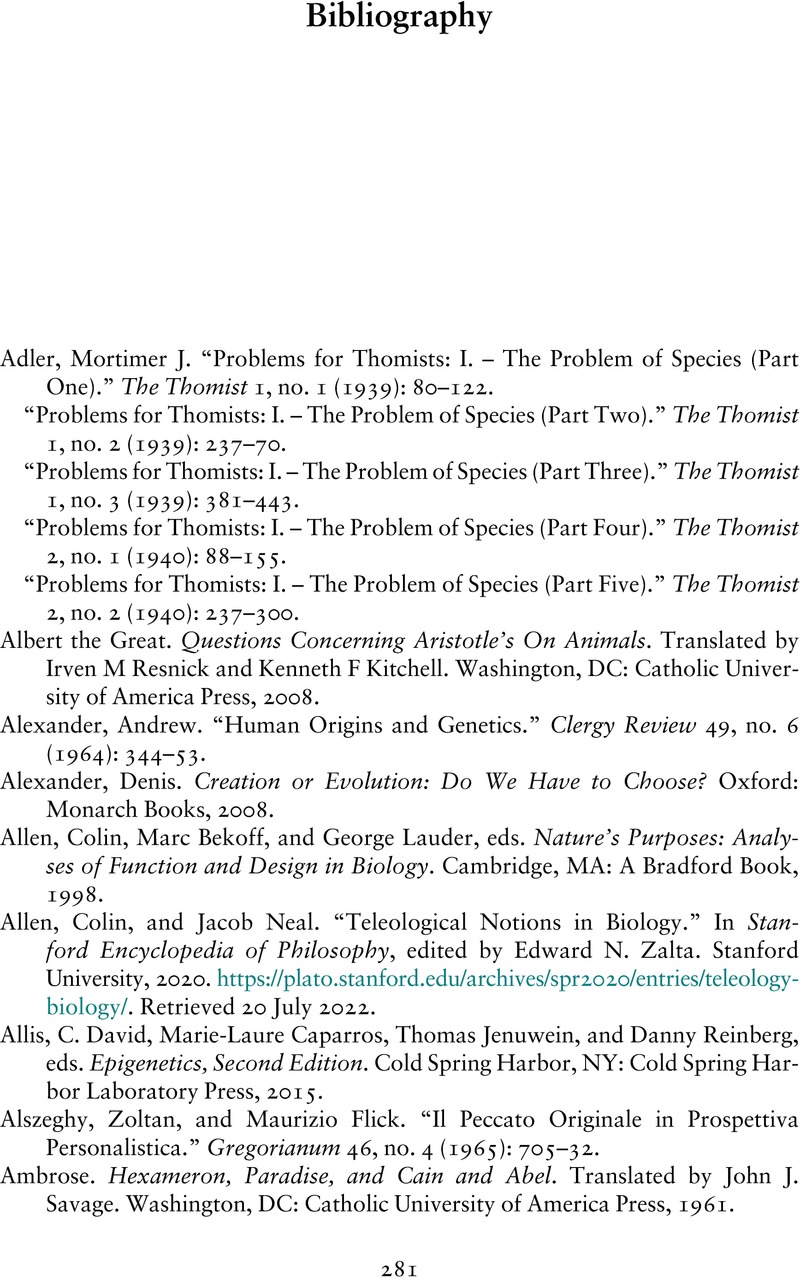Book contents
- Theistic Evolution
- Theistic Evolution
- Copyright page
- Dedication
- Epigraph
- Contents
- Figures
- Tables
- Acknowledgments
- Abbreviations
- Introduction
- 1 Metaphysics of Evolutionary Transitions
- 2 Essentialist and Hylomorphic Notion of Species and Species Transformation
- 3 Natural Selection, Teleology, and Chance in Evolution
- 4 Aquinas’s Account of Creation
- 5 Aquinas and Evolution
- 6 Evolution and Creation
- 7 Concurrence of Divine and Created Causes in Evolutionary Transitions
- 8 Theological Anthropogenesis and Evolution
- General Conclusion
- Bibliography
- Index
- References
Bibliography
Published online by Cambridge University Press: 19 October 2023
- Theistic Evolution
- Theistic Evolution
- Copyright page
- Dedication
- Epigraph
- Contents
- Figures
- Tables
- Acknowledgments
- Abbreviations
- Introduction
- 1 Metaphysics of Evolutionary Transitions
- 2 Essentialist and Hylomorphic Notion of Species and Species Transformation
- 3 Natural Selection, Teleology, and Chance in Evolution
- 4 Aquinas’s Account of Creation
- 5 Aquinas and Evolution
- 6 Evolution and Creation
- 7 Concurrence of Divine and Created Causes in Evolutionary Transitions
- 8 Theological Anthropogenesis and Evolution
- General Conclusion
- Bibliography
- Index
- References
Summary

- Type
- Chapter
- Information
- Theistic EvolutionA Contemporary Aristotelian-Thomistic Perspective, pp. 281 - 307Publisher: Cambridge University PressPrint publication year: 2023

